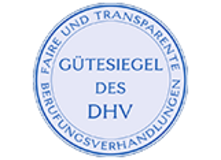“Rehabilitation before nursing care” is one of the central aims of the statutory nursing care insurance introduced in 1994. Very little is known, however, about the extent or efficacy of rehabilitation before and after nursing care. The BARMER GEK Care Report is issued in an attempt to remedy this shortcoming. This is the sixth year that a research group led by Professor Heinz Rothgang at the University of Bremen’s Center for Social Policy has compiled the report. Every year, the authors investigate care provision and report on important developments in the context of care insurance. Their findings are based on the care statistics obtained from a full survey of some 2.5 million persons dependent on nursing care, and routine records provided by BARMER GEK. The report, which thus encompasses about 10% of the population, was recently presented at a press conference held by the Federal Government.
Overview of selected report findings:
Rehabilitation before nursing care functions – Rehabilitation during care, less so
Increasingly, measures of rehabilitation are being undertaken prior to the need for care actually setting in. Approximately 15% of persons over the age of 65 who are dependent on care have undergone at least one measure of medical rehabilitation before becoming dependent on care provision. The research team led by Prof. Dr. Heinz Rothgang confirms that real efforts are being made to prevent the need for care. However, within the context of determining whether or not care provision is required, it is quite seldom that rehabilitation is recommended – partly due to deficiencies in the procedure. Clearly, although some changes have already been initiated, there is still a lot to be done. Once a person becomes recipient of care, the quota of medical rehabilitation sinks to around 7% in the year thereafter. This quota lies significantly above the quota recommended when determining whether care provision is necessary. This finding shows that rehabilitation does not follow solely as a consequence of being recommended, but also several months post care dependency. However, compared with persons who are not care recipients, those who are dependent participate in half as many rehabilitation measures.
Need to ensure a sufficient level of provision in the long term
Compared with health insurance, care insurance is an incomprehensive system of services. In order to close the resulting gaps, a so-called “new care orientation law” foresees a subsidy for supplementary care insurance, also known as Pflege-Bahr. However, by October 2013 only around 330,000 such insurance policies were concluded. This was far below the initial – already quite modest – forecasts of the German Government, who expected some 1.5 million supplementary insurance policies to have been concluded in the course of the year. Also in future, it is not to be expected that more than a small part of the population will opt for this extra insurance. Moreover, it is virtually impossible to fix a sensible insurance premium because it is not known how the costs of care and the mandatory care insurance will develop in years to come. It will therefore only be possible to insure against the risk of care in a pay-as-you-go insurance system by means of which care provision is subject to suitable dynamics.
Private insurance benefits from multiple risk selection
As the calculations contained in the care report illustrate, private care insurance benefits from multiple risk selection at the cost of social insurance: Privately insured individuals not only dispose of a higher income, they also account for a smaller proportion of persons of advancing age in need of care. Moreover, men more seldom become dependent on care provision than women – although they are over represented in the private care insurance. And the age structure of insured persons in the private insurance system is considerably more favorable than in the social insurance. As a consequence, the expenditure on care provision per insured person in the social insurance – with the same demand for services and the same evaluation criteria – is therefore four times higher than in the private care insurance system. As a consequence, individuals insured in the social insurance are disadvantaged. The most feasible way to compensate for the unequally distributed risks would be to introduce a form of integrated care insurance that encompasses the whole population. In the event that due to the lack of political will this cannot be achieved, the consequences of risk selection could be overcome by creating a system of financial equalization between the systems of social and private care insurance.
Own contributions to care provision
The care provision financed by the care insurance is subject to capped lump-sum amounts that are insufficient to cover the real costs incurred. As a consequence of the lack of dynamics and insufficient adjustments since 2007, the share of the costs of care provision that have to be borne by the individual recipients continues to grow. In the meantime, the total amount of self-funded in-patient nursing care significantly exceeds the share borne by the care insurance – in all stages of care provision.
You can obtain more information by contacting:
University of Bremen
Zentrum für Sozialpolitik (ZeS)
Dr. Rolf Müller
Phone: 0421 218 58623
e-mail: rmintprotect me ?!zes.uni-bremenprotect me ?!.de
www.zes.uni-bremen.de
News
University of Bremen Compiles Care Report for BARMER GEK
Studies

© Matej Meza / Universität Bremen
Studying at the University of Bremen
Whether it be the compact campus, the diverse study programs on offer, or the green cycling city – a degree at the University of Bremen has a lot to offer.
You can choose from a broad range of degree program at the University of Bremen:
- more than 100 bachelor’s and master’s degree programs
- the state examination in law
- international degree courses and further training offers
Profile
The University of Bremen is one of Germany’s medium-sized universities. In its mission statement, the university prioritizes:
- research-based learning
- a focus on students
- diversity
- internationality



![[Translate to English:] Staatsrätin Irene Strebl, Rektorin Jutta Günther und Konrektor Michal Kucera stehen vor einer Wand, auf der eine Videoübertragung angekündigt wird und machen ein Selfie.](/fileadmin/user_upload/universitaet/Uni_Allgemein/TOP-NEWS/2025_Slider/20250527_Exzellenz-Fotos.jpg)











